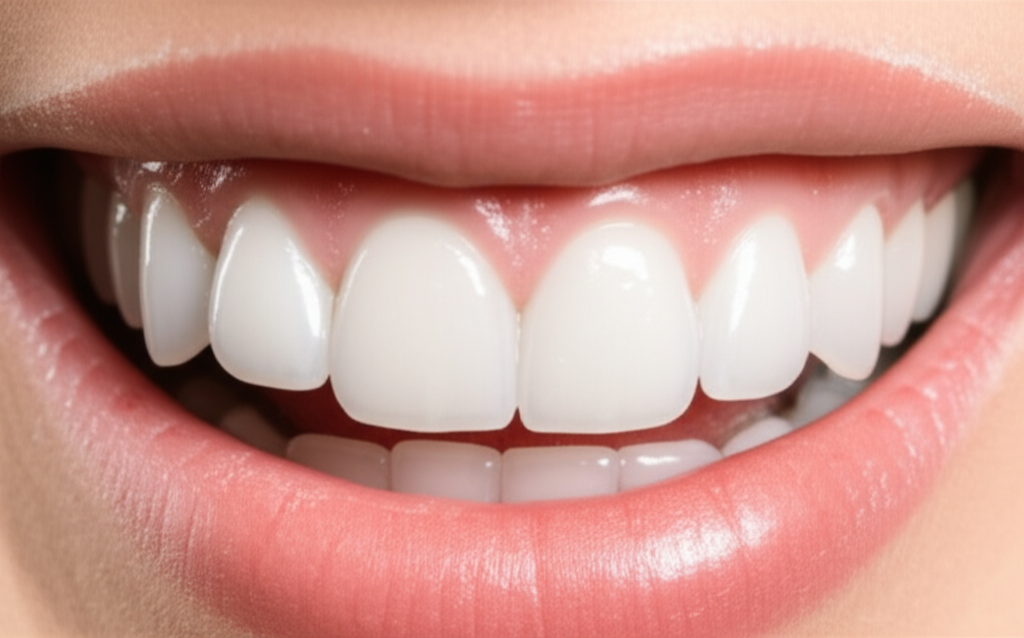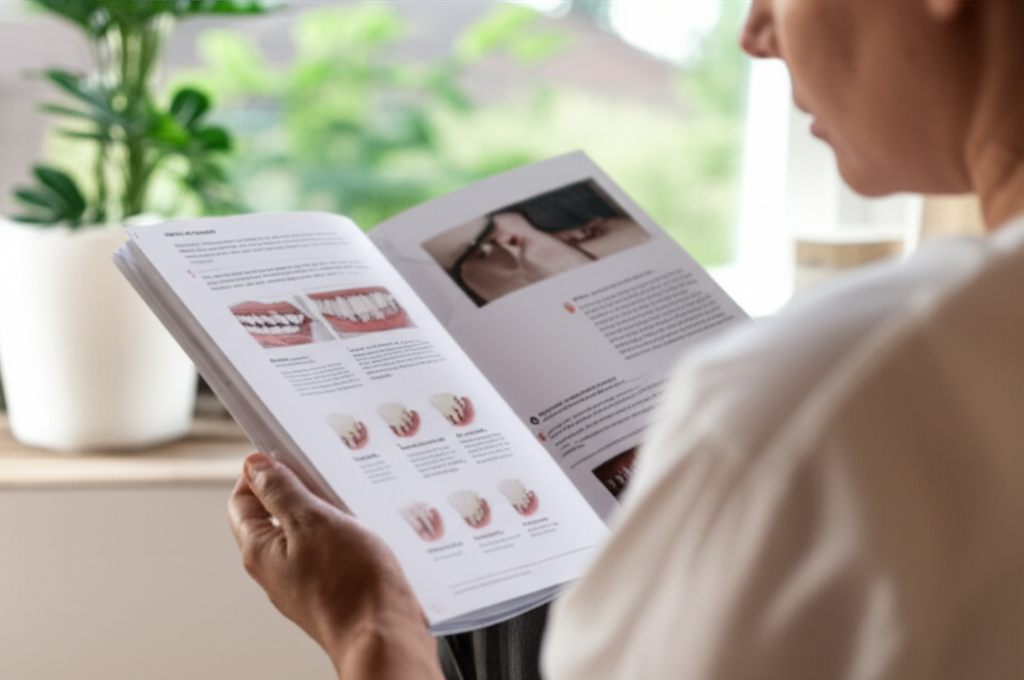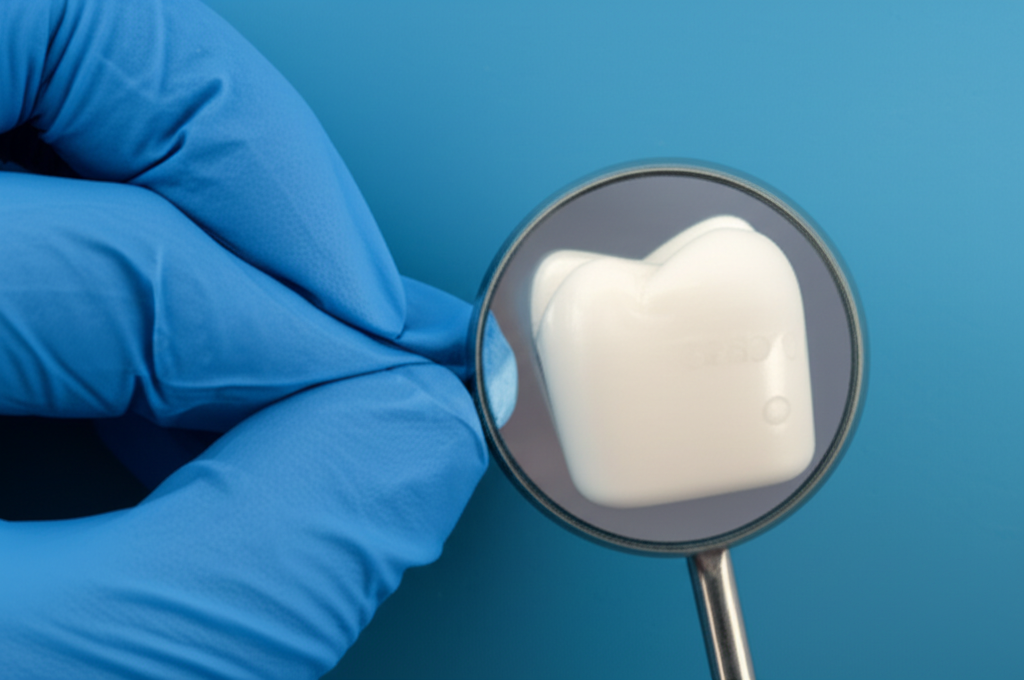
Can Veneers Make Your Smile Wider? Unlocking a Broader, More Confident Smile
Wishing your smile didn’t just vanish at the corners? You’re not alone. Many people want a fuller, brighter, more balanced smile. In this article, I’ll walk you through how dental veneers could help change your narrow, shadowy grin into a bright, broad, and confident smile. We’ll check out what causes a narrow smile, how veneers work, who makes a good candidate, and why this change can boost more than just your looks. This guide uses simple words, clear examples, and everything you need to know before making a decision. If you’ve ever asked, “Can veneers make my smile wider?”—keep reading!
Table of Contents
Why Do Some Smiles Look Narrow?
Have you noticed that when you smile, the corners of your mouth look dark or empty? That’s what dentists call a narrow smile.
A narrow smile usually happens when the curve of your upper teeth is too tight or your teeth are a bit too small or point inwards. Instead of seeing a big, white row of teeth, you see dark spaces at the sides—almost like your smile stops before your mouth does.
This isn’t just about how you look. When your smile feels narrow, it can make you feel shy, especially in pictures or with friends. You might even try to keep your lips together to hide those dark areas.
What Are Buccal Corridors and Why Should You Care?
Dentists call those dark areas at the side of your smile buccal corridors.
Think about it: when you watch a movie and an actor smiles, their teeth go all the way back in the mouth and look full. But in old photos, sometimes smiles look smaller or fade into darkness at the sides. That dark space is the buccal corridor.
If you have too much buccal corridor, your smile can seem small or narrow, and your face can look unbalanced. Some people feel like their teeth look spaced out or their smile looks empty at the sides—even if they’ve had braces or tooth whitening.
Fixing buccal corridors is one of the main reasons people want to make their smile wider.
What Are Dental Veneers?
You’ve probably heard about veneers, maybe from TV or a celebrity. But what are they really?
Dental veneers are thin, made-to-fit covers—usually from porcelain or composite stuff—that stick to the front and edge of your teeth. Like a sticker, they make your teeth look straighter, whiter, and yes, wider.
Unlike crowns, which cover the whole tooth, veneers just cover the part people see. The job? To make your smile’s shape, color, and width better—without big surgery. Dentists use special tools like Digital Smile Design (DSD) and work with pros in a veneer lab to make sure everything looks right.
How Do Veneers Widen a Smile?
Now for the details—the way veneers make your smile wider is pretty smart:
1. Reshaping Important Teeth
Your lateral incisors and canines (the teeth next to your front ones) play a big part in your smile’s width. If these teeth are small or turn inside, your smile looks narrow. By adding a bit more size or turning these teeth out with veneers, the dentist can make your smile look bigger.
2. Closing Dark Spaces
Veneers can be made to stretch a little more toward the back of your mouth, covering the premolars too. This blocks those dark spaces, so when you smile, teeth go all the way across your mouth.
3. Making Things Even
By shaping each veneer, your dentist can fix little bends or teeth that are too small. One long, even line of teeth makes your smile look wider and matches your face better.
I’ve met people who hid their smile for years—after veneers, they started smiling in every picture.
Who Is a Good Candidate for Smile Widening Veneers?
Veneers are great, but they’re not for everyone. Here’s who they help the most:
- People with a narrow upper arch or small teeth (dentists call this “microdontia”).
- People who hate the dark spaces at the side of their mouth.
- People with healthy teeth (no big cavities or gum sickness).
- People who know what veneers are and how to take care of them.
Sometimes, if your teeth are very crooked or your bite is way off, veneers might not be all you need. You might need braces or clear aligners first. Your dentist will help you figure it out.
What Happens During the Veneer Process?
Here are the steps, so you know what to expect:
1. Talk & Smile Plan
You start with a talk and full checkup. Some places use 3D pictures or Digital Smile Design, so you can see what your new smile could look like before you start.
2. Tooth Prep
A tiny bit of enamel might come off the front of your teeth. This doesn’t usually hurt and is just enough for the veneer to fit.
3. Molds and Temporaries
Your dentist takes careful molds. While your real veneers are being made in a dental ceramics lab, you might get temporary veneers so you don’t have to hide your smile.
4. Making the Veneers
Experts at the lab use strong stuff like porcelain, zirconia, or Emax to shape your veneers the right size and color.
5. Final Fit
Last step—your dentist sticks the veneers on your teeth. Your smile changes in front of your eyes!
Benefits of Veneers—Beyond Just a Wide Smile
Veneers can do a lot more than just widen your smile:
- Lasting whiter teeth. Veneers cover stains that whitening can’t fix.
- Fixing chips and cracks. Got a broken tooth edge? Veneers make it smooth again.
- Closing gaps. No more extra space between your front teeth.
- Better face shape. A wider smile can make your face look even and younger.
Even better, today’s veneers have a shine and color that look real, so no one can tell they aren’t your own teeth.
Are There Any Downsides?
Veneers are cool, but nothing is perfect. Here are some things to think about:
- They can be pricey. Good veneers use strong, good-looking stuff and skilled work, so they cost money. Some dental insurance doesn’t pay for cosmetic stuff.
- Some enamel is taken off. Once you get veneers, you usually have them for life—they can’t just pop off.
- You might feel sensitive at first. Some people feel a little sensitive to hot/cold for a few days.
- Not for fixing big tooth problems. Your teeth and gums need to be healthy before you start.
The good part? With good care and a good china dental lab, veneers can last many years—sometimes more than 20!
What Else Can You Do If Veneers Aren’t Right?
Maybe your teeth are really crooked, or you’re just not sure about veneers. Don’t worry—there are other ways to get a wider smile!
- Braces or clear aligners. These can actually make your jaw wider over time.
- Dental bonding. This adds material to teeth without much drilling and is quicker, though it doesn’t last as long.
- Crowns or bridges for teeth that need to be stronger and look better too.
- Slight reshaping for small changes.
Your dentist can help you choose, and sometimes you need to mix different ways for the best look. A good digital dental lab can help make just what you need.
Real People, Real Smiles: What Can You Expect?
Here’s what most people see with veneers to make their smile wider.
| Category | Typical Results |
|---|---|
| Smile Width Improvement | Big change in 90%+ cases |
| Patient Satisfaction | 85%–95% feel more confident and happy |
| Veneers Longevity | Often 10–15 years or more |
| Pain/Discomfort | Not much after a week |
| Number of Teeth Treated | Usually 8–10 for best look |
You don’t have to just take my word. Look at before-and-after photos, talk to people who’ve done it, or check out a smile gallery to see what’s possible.
FAQ: Your Questions Answered
Q: Will veneers look real?
A: Yes! Today’s veneers look just like real teeth—you help pick the color and shape.
Q: How long do veneers last?
A: With good brushing, dentist visits, and not biting on hard things, they often last 10–15 years or more.
Q: Do veneers hurt?
A: Most people feel little or no pain. Sometimes, you might feel a little sensitive at first, but it goes away soon.
Q: Can I eat whatever I want?
A: Almost! Just don’t bite really hard things (like ice or jawbreakers) and don’t use your teeth to open stuff.
Q: Is this surgery?
A: No. Getting veneers is a regular dental job, not surgery.
Key Things to Remember
- A narrow smile is usually because of a tight tooth arch, small teeth, or both.
- Buccal corridors are the dark side spaces—you can cover them with custom veneers.
- Porcelain and composite veneers can change and widen the teeth you see when you smile.
- Most people get the best look by getting 8–10 top teeth veneered.
- Veneers don’t just make me wider—you get whiter, smoother, and stronger teeth too.
- Good candidates have healthy mouths and know what to expect.
- Veneers are forever; so make sure you’re sure and pick a dentist and dental laboratory you trust.
- There are other ways if veneers aren’t right for you.
- A wider smile is not just about looks—it brings confidence and happiness.
Ready to see what a wide, confident smile could do for you? Talk to a cosmetic dentist and see if veneers are your key to showing your biggest, happiest smile!








